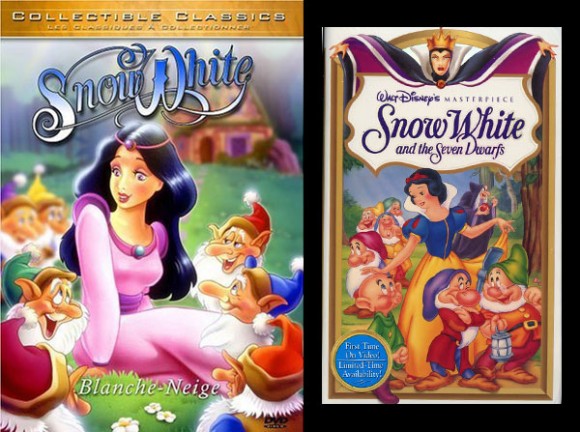
Late capitalists and intellectual property fanatics, you might want to stop reading. I’m going to tell you a scary story. A true story. The story of a group of companies so mischievous and shameless that they scraped the bottom of the barrel of Disney’s unique, beautiful, one-of-a-kind, multi-million dollar, extremely copyrighted content. This is a story about the mockbusters.
I was surfing YouTube recently when I came across a weird video in the recommended section. It looked at first to be a pirated version of the Disney movie “Snow White” with the title translated into French (“Blanche Neige”). I clicked on the video only to find that there were many other similar recommended videos alongside it. Their titles were also in French, and they all appeared to be pirated Disney movies. But when I scrolled through the comments, I found to my surprise that I was not being recommended dubbed, pirated Disney movies. I was being recommended dubbed, pirated movies from somewhere else entirely. The comments section was full of enthusiastic raving about how nostalgic these movies are for viewers, and how much better they are than Disney films.
“Blanche Neige” opens with a credit to a company called GoodTimes Home Video. The reason that their films are so easily available online is because the company was announced defunct in July of 2005, leaving nobody around at the company that was motivated enough to monitor the online circulation of its films. Strangely enough, the defunct company was purchased by Gaia, a popular conspiracy theory website which blasts YouTube with ads from time to time and is known for propagating the Gaia Hypothesis, the idea that the entire Earth is literally alive and conscious.
The GoodTimes Home Video company was established in 1984 by the Kerr brothers: Kenneth, Joseph and Stanley Cayre. GoodTimes became well-known in 1993 when it was involved in a lawsuit with Disney for copyright infringement, which Disney lost on the basis that the stories disputed were all in the public domain before Disney used them. However, GoodTimes does not actually make its own movies; it is a distribution company for various production companies that actually produce these mockbusters. Mockbusters are movies that are stylistically similar to big blockbusters that come out at the same time.
“Blanche Neige” was made by a company called Jetlag Productions. Jetlag Productions was made out of a partnership between GoodTimes and some animators scalped from early ’90s television series like “Conan the Adventurer” and “He-Man.” These animators started Jetlag Productions and became one of GoodTime’s suppliers of animated films. Jetlag was responsible for productions of knockoffs such as “Cinderella,” “The Jungle Book,” “Sleeping Beauty,” “Pocahontas,” “Hercules” and “The Hunchback of Notre Dame.” This streak of rapid film production was put to a halt when Jetlag was also purchased by Gaia.
If you’ve heard of mockbusters, you’ve probably also heard of Golden Films. Golden Films is one of the more well known mockbuster corporations. This may be because while Golden Films were primarily distributed by GoodTimes, a few of them were actually distributed by more respectable companies like Sony and Hallmark.
Golden Films was founded in 1988 by Diane Eskenazi. With GoodTimes as the distributor, the company released an “Aladdin” ripoff which invoked the mentioned lawsuit from Disney. Golden Films also released ripoffs of “Thumbelina,” “Beauty and the Beast” and “The Little Mermaid.”
The last surviving mockbuster conglomerate is GoodTimes’ only practical competitor, the UAV corporation, now known as Sterling Entertainment Group. The company started in 1984 and is notable for its large repertoire of rip-off movies, as well as for its dabbling and other public domain work. The reason these rip-off movies can even exist is because they are ostensibly based off public domain material, usually Brothers Grimm fairy tales.
Most of these companies are currently defunct or have deviated from their original purpose. Nowadays, most animated movies are made in a 3D style and animated with computers and with much less care. These movies are faster and cheaper to make, meaning that aspiring animation companies or animators are not reduced to solely making ripoffs. There is less financial risk involved in making an original 3D animated movie than there would be to make a traditionally animated one. This, I hypothesize, is why nowadays we have so many crappy animated features like “Sir Billy” and “Johnny Johnny.” To make an original 3D animated movie, you don’t need a whole company and hundreds of man-hours, so you don’t need to make rip-offs just to keep the company in the black.
But make no mistake—I’m happy that these crappy movie rip-offs exist. They’re both a tangible casualty of capitalism’s effect on the arts and a delightful thorn in Disney’s side, proving that concepts like the public domain and the value of good storytelling are culturally important to us, at least for now. These movies—technically not rip-offs, technically legal and technically not Disney—are a beacon, a symbol of hope and faith that someday the idea of intellectual property will loosen its iron grip on the arts.
